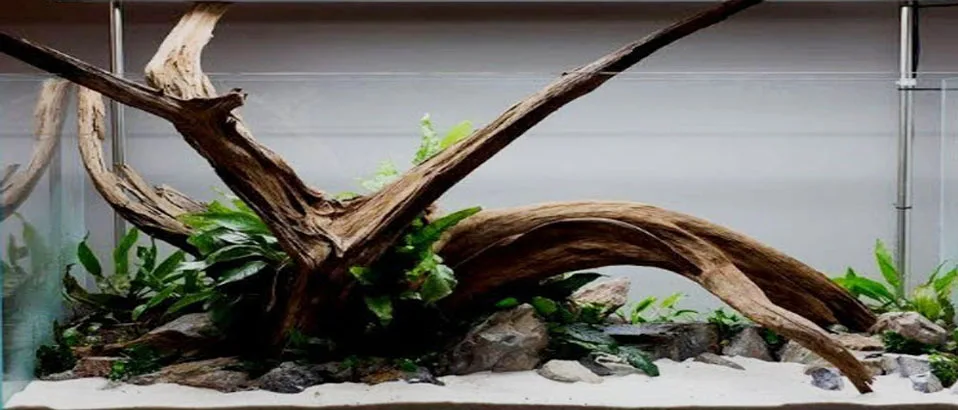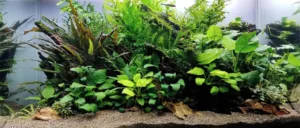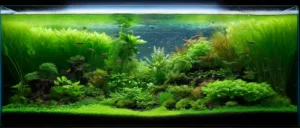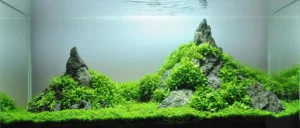Aquarium driftwood enhances natural beauty in fish tanks. A plain tank can be transformed into an amazing underwater display by the rustic appeal and organic shapes. Every driftwood is different due to its elaborate patterns and natural charm that improve the appearance of your aquarium. Driftwood maintains a balance between aquatic life and natural décor, turning the aquarium from a mere fish home to a piece of art.
Table of Contents
Benefits of Using Aquarium Driftwood
Driftwood has many advantages other than being attractive. It provides hiding places where shy species can express themselves freely. These crevices formed by driftwood help in breeding as well as hiding some water fauna leading to a healthier ecosystem. Moreover, it allows beneficial biofilms and microorganisms to grow, which are important for maintaining water quality naturally and serving as food to fish and other small animals found there. Additionally, by selecting suitable driftwood we may mimic various underwater homes for certain types of fish to make them feel comfortable while reducing stress levels and increasing energy levels for general health improvement.
Types of Aquarium Driftwood
Malaysian Driftwood
This is one sturdy piece of wood with dark shade that is highly durable. The Malaysian driftwood sinks easily releases tannins that make the water look yellowish resembling freshwater habitats. Its rough surface gives it a wild look which is ideal for beautiful scapes inspired by nature inside aquariums. Fish and invertebrates often find the numerous nooks and crannies perfect for hiding and exploring, contributing to a more engaging environment.
Mopani Wood
The twisted branches with two-tone coloration give Mopani wood striking appearance. It is heavy enough to sink well but may require soaking because of high tannin content. Mopani wood comes with smooth edges along with rich contrasting colors that add as an additional benefit to the visual pleasures of any tank. The wood’s robust structure is strong enough to hold on aquatic plants thus giving out a beautiful lush underwater forest.
Spider Wood
In aquaria, spider wood creates an intricate look with its branching structure. It also has lighter color that contrasts well with green vegetation in the aquarium. Gnarled and spider-like branches create a sense of depth and complexity that helps in achieving creative aquascapes. While fish enjoy passing through the complex network, shrimp and other small invertebrates can graze on it or hide there.
Cholla Wood
Cholla wood which comes from cactus skeleton is porous making it suitable for shrimps and small fish. It is light weight hence may require some anchoring initially but provides a very natural look. These several holes and crevices provide plenty of hiding places and host biofilms which are necessary diet for many invertebrates.
How to Prepare Driftwood for Aquarium
Proper preparation of driftwood ensures it is safe and ready for your aquarium. This in turn makes the aquatic world healthy and a place to be relished visually. By following these steps, you can make driftwood safe for your aquarium:
Step 1: Selecting Suitable Wood
Choose the right type of wood that you want to use in your tank. Not all types are suitable for making driftwood aquarium setup safe. Hardwoods such as oak, maple, or manzanita are ideal because they last long and do not rot quickly. The soft woods such as pine and cedar should however be avoided since they contain resins which can harm fish. Naturally collected driftwood should be free from pesticides, chemicals and other pollutants.
Step 2: Harvesting Aquarium Driftwood
If you’re collecting driftwood for aquariums, take clean pieces from unpolluted areas such as riverbanks, lakeshores and forests. Ensure complete dryness of the wood with no rotting signs seen on them. Freshly cut wood should be avoided, as it contains sap and other substances that can leach into the water and harm your fish.
Step 3: Cleaning and Stripping Bark
Clean up your driftwood thoroughly to remove all dirt, debris or any other contaminants that may cause adverse effects on fish health. Use a hard brush to scrub it under running water. Make sure you remove off all barks since they decay and introduce toxins into your aquarium. Stripping the bark also helps enhance the natural beauty and texture of the wood.
Step 4: Cutting and Shaping
Use a saw or another appropriate tool to cut the desired size and shape for your driftwood from big chunks. Sharp edges can easily harm your fish; thus, make the surface smooth by sanding down all irregularities or serrated parts. Be creative with the shapes you pick such that, they will fit well together and also add to your aesthetic aquascape design.
Step 5: Boiling Driftwood for Aquarium
Boil the driftwood for several hours so as to sterilize it completely and remove any remaining impurities. Boiling also helps in waterlogging the wood, ensuring it sinks into an aquarium. The process of boiling may take few hours to days dependent on how big or dense that piece of fresh wood could be. Boiling is also helpful in releasing tannins which may discolor water.
Step 6: Soaking and Leaching Tannins
After boiling, place the aquarium driftwood in clean water and leave it there for a few days up to weeks if necessary. Change the water regularly to continue leaching out tannins. This step is essential to prevent excessive tannin release that can darken your aquarium water. Some aquarists prefer the tea-colored water that tannins produce, but if you prefer clear water, this step is crucial.
Step 7: Testing for Buoyancy
To test for buoyancy before adding driftwood into an aquarium, put it inside a container filled with tap water only. Continue soaking until it stays sunken. If it still floats use some rocks as weights or gluing temporarily against inner glass wall inside the tank. Ensure the wood is completely submerged and stable to prevent any disruptions in your tank.
Step 8: Final Placement in the Aquarium
Once the driftwood is fully prepared, arrange it in your aquarium. Consider the layout and how it will interact with other elements like plants, rocks, and substrate. Position the driftwood to create hiding spots and pathways for your fish. Secure it firmly to prevent it from shifting and causing damage.
How to Select the Right Driftwood for Your Aquarium
Factors to Consider: Things to look for in selecting the driftwood include the size of your tank, species of aquatic life you have, and the overall theme of your aquarium. These are the most essential factors to consider when choosing driftwood in order to pick a type that will fit your tank appropriately and supplement what your fish as well as plants need.
Size and Shape: Get pieces of driftwood that can easily fit into your tank while leaving some room for fish activities. The shape should be part of your aquascape design if it is intended to be a natural habitat or artistic arrangement. Huge clumsy objects could overpower small tanks whereas slenderly built woods with many branches would create intricacy without filling up space. Assess how big your tank is in relation to other components like rocks and plants.
Compatibility with Aquatic Life: Certain fish and invertebrates thrive in the presence of driftwood. Avoid woods that might end up changing water parameters too much. Ensure that the driftwood you choose is safe and suitable for your tank’s inhabitants. For example, tetras and discus fish originating from blackwater environments benefit from tannins released by some types of driftwood which mimic their natural habitats. On the other hand, wood that significantly reduces pH may not be suitable for some species such as African cichlids that prefer harder, more alkaline water.
Aquarium Plants on Driftwood
Your tank gets a quality texture as well as visual appeal when you use driftwood. Create an aquascape that is attractive to look at it by matching its color and shape with plants, rocks and substrates. Combination of aquarium driftwood along with carefully picked plants can turn a tank into a natural looking habitat. The appropriate selection of plants will not only beautify the aquarium but also support the overall health condition of its aquatic ecosystem.
Plants that attach to driftwood, such as Java fern and Anubias, are effective at softening the harsh lines of the wood, creating a seamless blend between the hardscape and the living elements of the tank. Driftwood can have Java moss tied or glued to it and it will give rise to thick green carpeting very quickly. Anubias and Java ferns can be attached using thread or aquarium-safe glue until they root themselves to the wood.
These plants tolerate diverse types of water conditions hence could fit in most settings for this kind of aquarium setup. Bucephalandra on the other hand may be attached onto pieces of driftwood creating more diversity and dynamism within an aquascape while Bolbitis also serves similar purposes. These plants create focal points within your tank thereby adding depth through multiple planes.
Aquarium Driftwood Problems
Algae Growth on Aquarium Driftwood
Driftwoods catch algae rapidly especially for those tanks with high light and excess nutrients. Some algae are natural and even important, but in some instances their growth might be undesirable. To manage the presence of algae reduce the lighting (in terms of both duration and intensity) and developing a balanced level of nutrients within your tank. Introducing certain types of snails or fish that eat algae into your aquarium can also help control it. Regularly brush the wood gently to remove accumulated algae without damaging it.
Mold and Fungal Issues with Aquarium Driftwood
On new driftwoods there may appear white mold or fungi particularly during the introduction stage. Generally it is harmless and will go away by itself. For prevention of this mold as well as fungal infestation, perform regular water changes coupled with good tank hygiene practices. Alternatively, scrub affected areas softly using a soft brush. If all else fails you may want to consider boiling it again until you are sure that it is free from any form of contamination.
Tannin Release and Water Discoloration
Driftwood releases tannins, which can tint the water color. While tannins have benefits, such as creating a more natural environment for certain fish species and possessing antimicrobial properties, excessive tannins can make the water appear murky. Tannin release release can however be managed by soaking the driftwood in fresh waters from several days to weeks before it is introduced inside your tank after regularly changing soaks solutions. It is also possible to clear tannin out by utilizing activated carbon in your aquarium filter system right away after placing driftwood inside it.
pH Fluctuations
Driftwood can lower the pH of your aquarium water, which may not be suitable for all fish species. After introducing new driftwood, one should regularly monitor the levels of pH. If the pH is lowered too much do some partial water changes and consider using buffering agents to stabilize it. It’s very critical that you check all parameters of your tank’s water so as to be within the right range for your particular aquatic life.
Structural Decay Over Time
Driftwood will degrade over time, going from soft to brittle and breaking apart. The wood must be inspected frequently for signs of decay such as soft spots or crumbly pieces. When degradation is significant, replacement may be necessary for any affected parts of the wood. Introduce new pieces gradually so as to avoid a sudden change in conditions in the tank. Any new driftwood must have been carefully prepared not to introduce contaminants.
Unwanted Organisms
Natural driftwood can accommodate pests and harmful microorganisms inside them. To get rid of these risks boil and soak it before putting it into an aquarium. However, it’s essential to remain vigilant and inspect the wood regularly. If you suspect the presence of pests, quarantine the driftwood and repeat the sterilization process.
Anchoring and Stability
The driftwood floats if not fully waterlogged thus causing instability in your aquascape. This means that you need to make sure, before placing it in a tank that it is well soaked and submerged thoroughly. You can prevent shifting by attaching it with rocks on weighing down or using safe adhesive materials intended for use on aquariums.
Aquarium Driftwood Compatibility
Some fish and invertebrates may not thrive with certain types of driftwood. For instance, fish that prefer harder, more alkaline water may be adversely affected by the pH-lowering properties of driftwood. Research the specific needs of your tank inhabitants to ensure that the driftwood you choose is compatible with their requirements.
Conclusion
Aquarium driftwood is not just an accessory; rather it improves the visual beauty as well as the ecological harmony within your tank. This article guides on how to select, prepare and look after this very important feature to have in an aquarium so as to make it more natural and interactive with fish in it. Hiding places, biofilm support and re-creation of natural habitats that reduce stress levels of fish are some of the benefits of using aquarium driftwoods.
Different types of driftwood, such as Malaysian, Mopani, Spider, and Cholla wood, each bring unique characteristics and aesthetic qualities to your tank. Proper preparation involves scrubbing it clean, killing off germs through heat treatment or chemical applications followed by soaking until ready for use in aquariums. To create a healthier environment for your aquatic life, remove tannins from the water. Furthermore you can enhance your tank’s aesthetic value by incorporating plants into the system while combining other natural factors like rocks or driftwoods together with your pets.
Frequently Asked Questions (FAQs)
How to clean large driftwood for aquarium?
Start by scrubbing the wood with running water until it is free of dirt, debris as well as any potential impurities using a hard bristle brush when cleaning large driftwoods for your fish tank. In case the size of the driftwood does not allow boiling, you can consider soaking it in vinegar solution (1 part vinegar to 10 parts water). After scrubbing, rinse it well so that no vinegar remains on the surface. Dry it completely before preparing further in an open place.
How to boil driftwood for aquarium?
Put it inside a big cooker and make sure that it is completely submerged in water. If the piece of wood is too big for the pot then you may decide to cut it into smaller sizes. Heat the water until it boils for several hours. This process will help you get rid of germs, extract tannins and cause it soak so that when you put it on your aquarium, it would sink.
How long to boil driftwood for aquarium?
Boil your driftwood at least one or two hours depending on its size as well as density. For bigger pieces having higher density, they may need up to four hours of boiling time so as to be properly sterilized and soaked. Such a boiling period helps in getting rid of any pathogens or pests while minimizing tannin release.
How long to soak driftwood for aquarium?
Soak driftwood for at least 1-2 weeks, depending on its size and the amount of tannins it releases. Change the soaking water daily to help leach out tannins more effectively. Soaking for this duration ensures the driftwood becomes fully waterlogged and reduces the likelihood of significant water discoloration once placed in the aquarium.
How to add driftwood to aquarium?
To add a driftwood in the aquarium, it must first be fully waterlogged on its own and sink. Position the driftwood in your tank following your aquascape design as well as how it will interact with other elements like plants, rocks and substrate. The use of rocks or aquarium-safe adhesives may be necessary to ensure that the driftwood does not float or shift.
How to cure driftwood for aquarium?
Cure driftwood for an aquarium by washing it thoroughly with a stiff brush then sterilizing by boiling for several hours. Soak the wood in clean water for several days to weeks after boiling, changing the water regularly to remove tannins. This ensures that it is safe, already soaked and ready for use in your aquarium.
Is driftwood good for aquarium?
Yes, driftwood is good for aquariums. It brings about a lot of advantages like providing hiding places and breeding ground for fish, supporting beneficial biofilm growth as well as creating more natural looking habitats. Driftwoods can also release tannins which possess antimicrobial properties that lower pH making environment more suitable for certain types of fishes.
Where to find driftwood for aquarium?
You can find driftwood for aquariums at pet stores, online retailers, and specialty aquarium shops. When collecting driftwood from natural sources, choose pieces from clean, unpolluted areas like riverbanks, lakeshores, or forests. Ensure the wood is thoroughly cleaned, sterilized, and treated before adding it to your aquarium to avoid introducing contaminants or pests.




